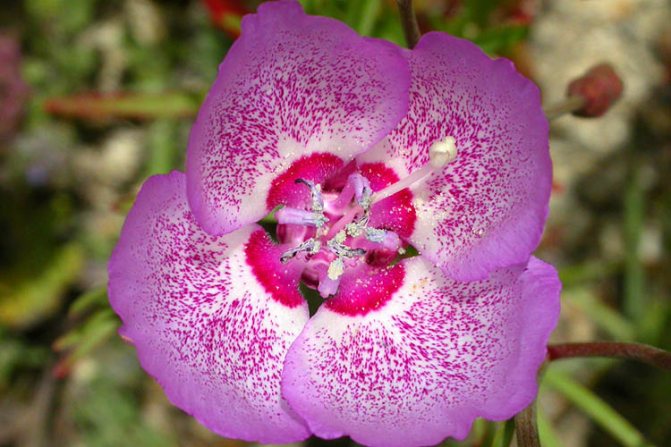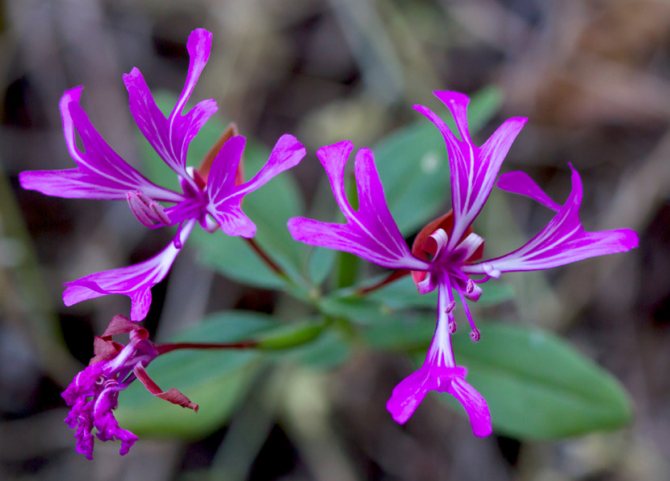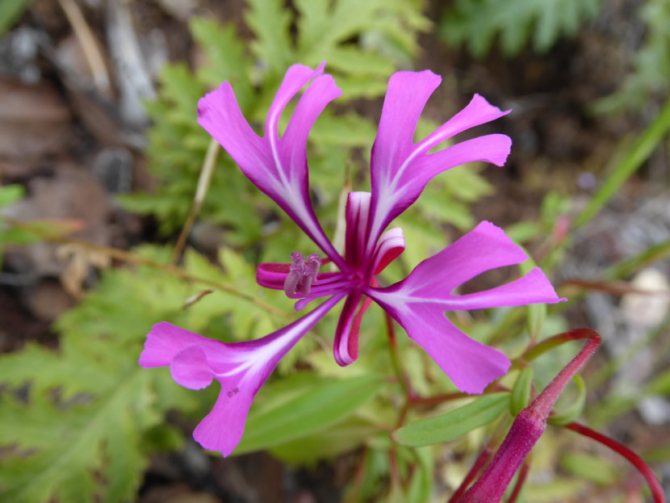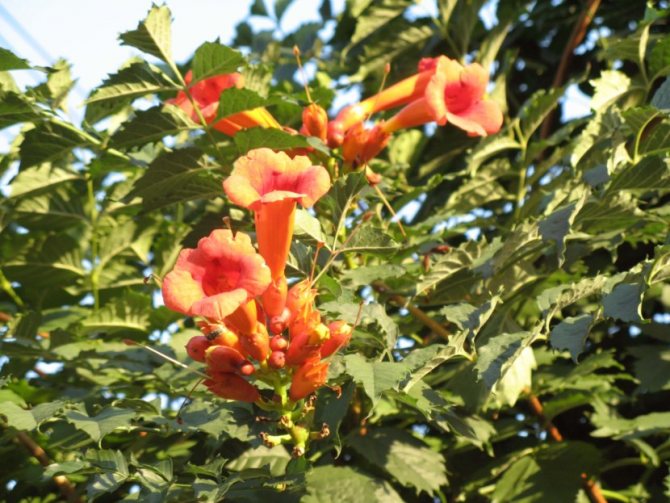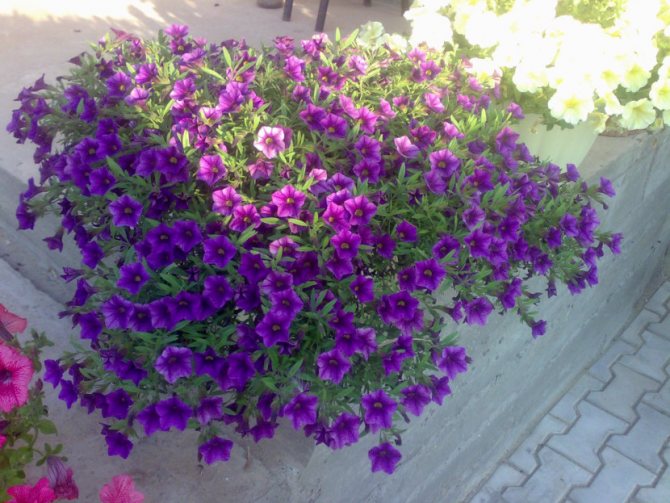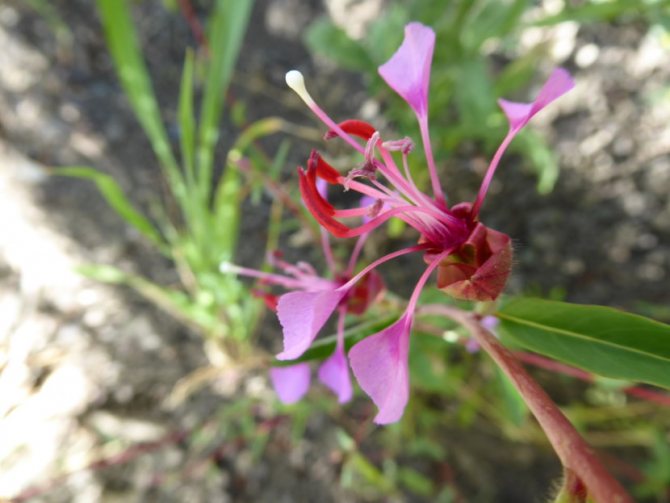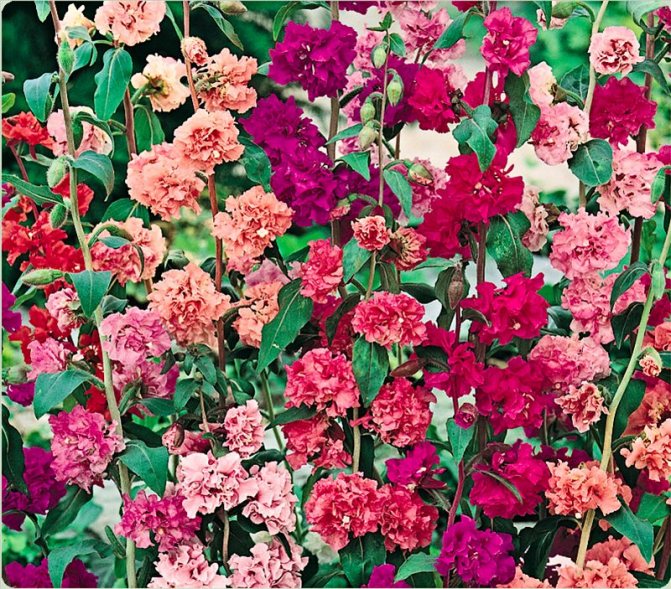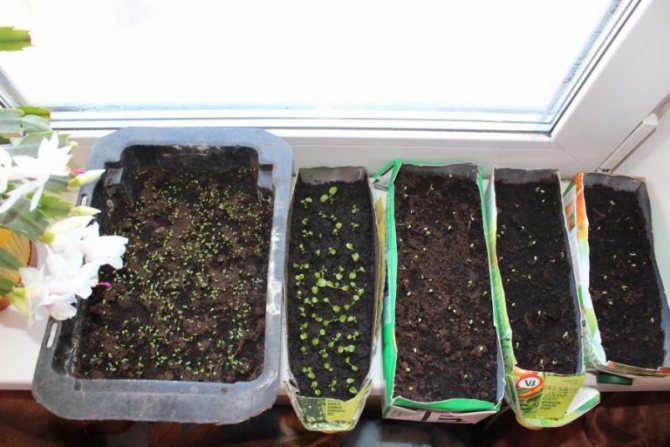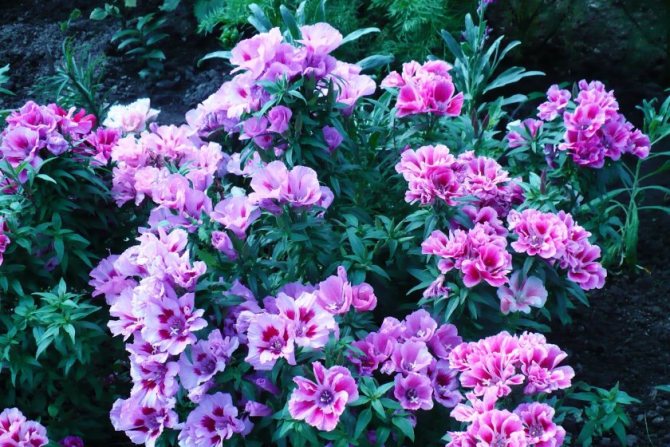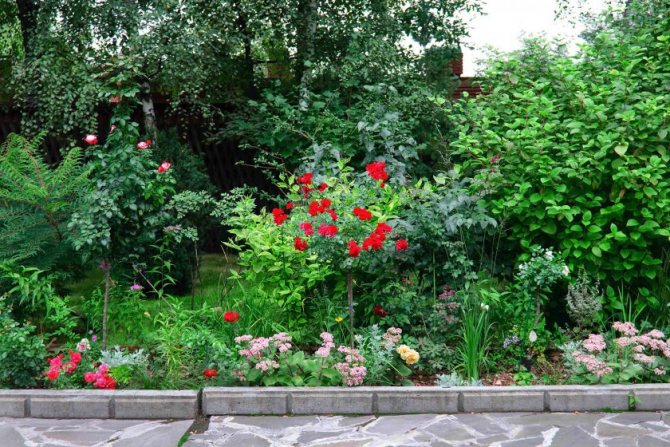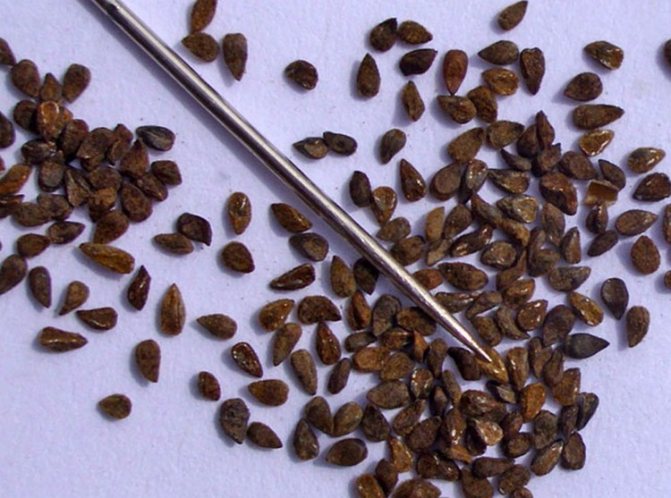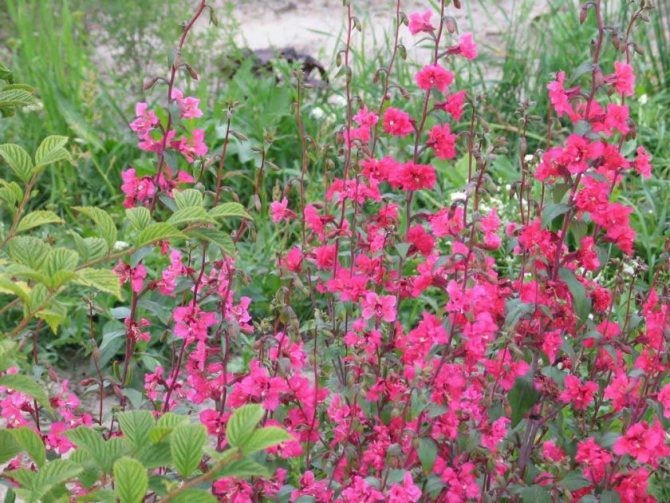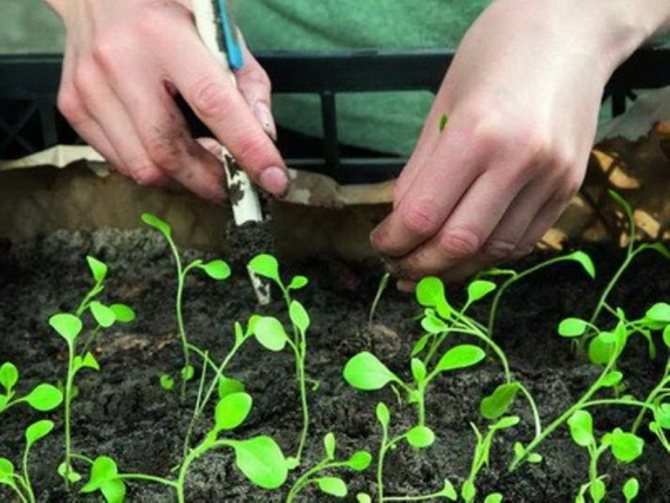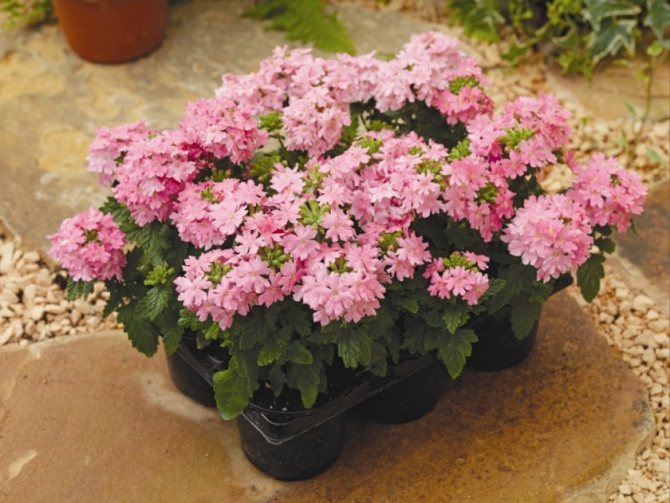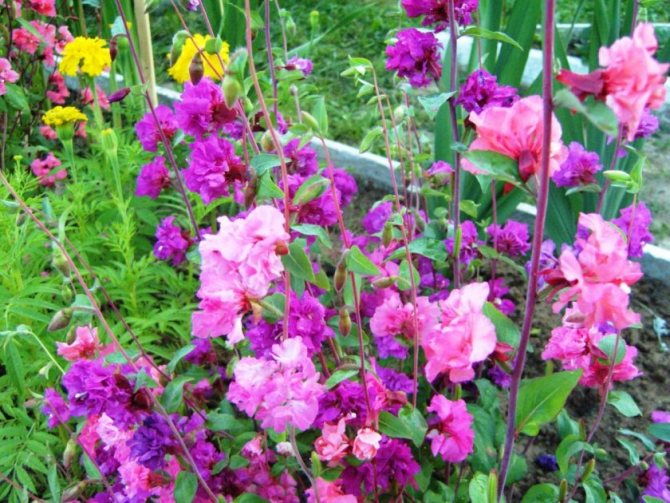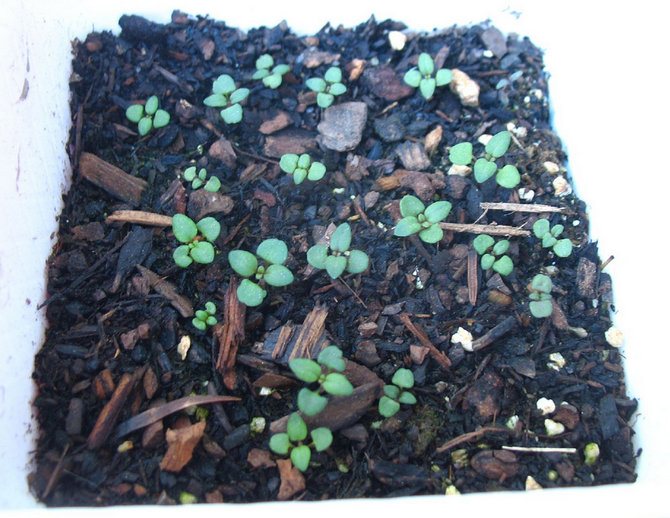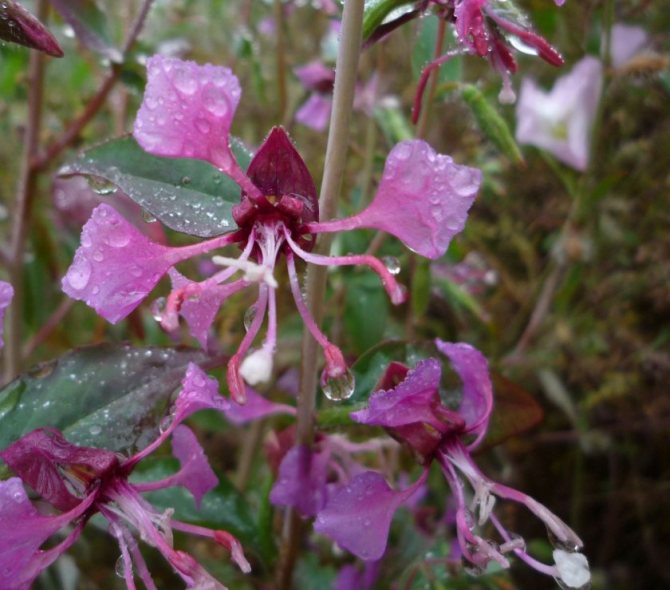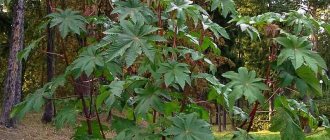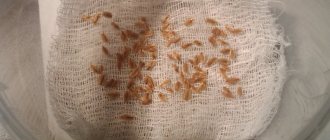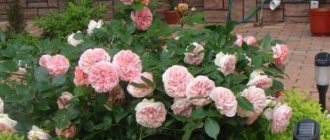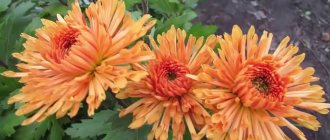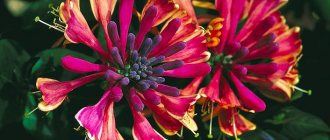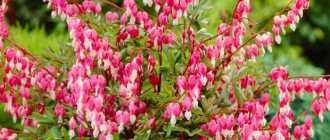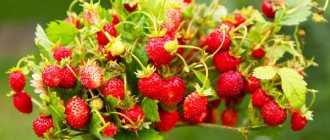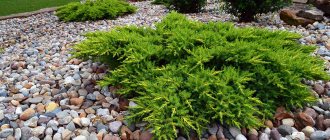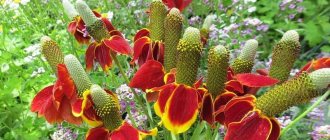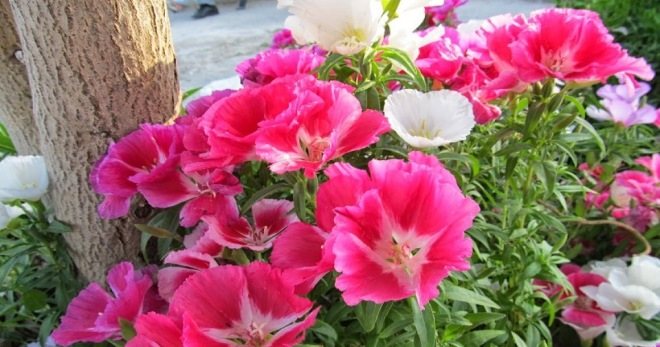
Gardeners are interested to know how Clarkia graceful, grown from seed, is cultivated. It is an ornamental annual with an attractive appearance. The peculiarity of clarkia is that it blooms for a long time, pleases with corollas of an unusual shape and bright color.
Clarkia graceful: description and types
The first clarkia came to Europe thanks to a cleric named Clark, who brought this plant from America. An annual variety was named in honor of him. Nowadays, many clarke of different colors are widespread: pink, white, lilac, orange, red. There are varieties in two shades or covered with strokes and dots.
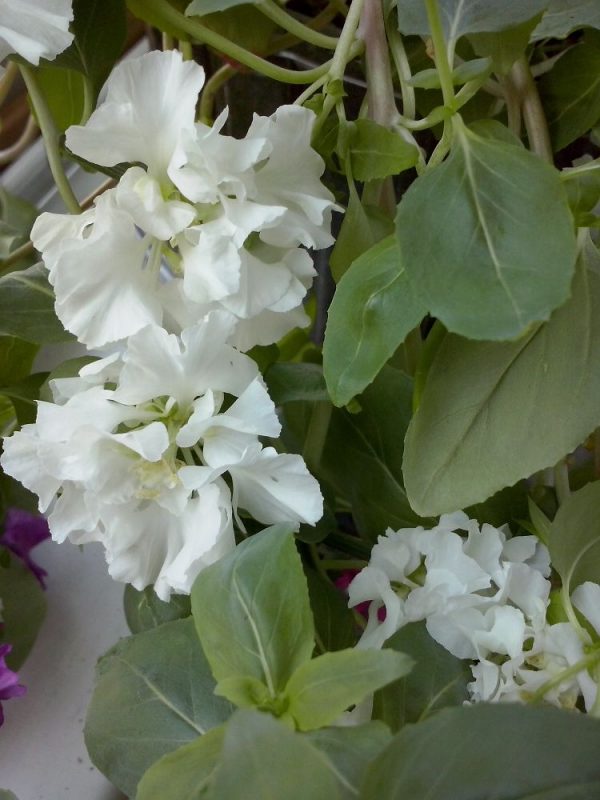

Clarkia graceful white
The leaves on the stem are oval, rich emerald shade with burgundy veins. The plant is capable of reaching 60 cm in height. Small flowers are combined at the top of the stem to form an inflorescence.
In summer cottages, there are 3 types of clarkia:
- "Marigold" or "graceful". A plant with abundant branches, reaching a height of 1 meter. Seeds of this variety are capable of sprouting in 4 years after removal from the flower, flowers of the correct shape up to 40 mm in diameter. Active flowering lasts from July to early autumn. It is this plant variety that is adapted for the climate of Russian regions.
- "Hairy" or "pretty". This is a dwarf bush with stems up to 40 cm, which is also covered with small flowers of symmetrical shape and different colors. A pretty clarke is distinguished by an unusual structure of the petals: each is divided into 3 identical parts, which are widely spaced from the center. It blooms a little earlier than the previous variety.
- Clarkia "Breveri". More recently, it has become widespread as a frost-resistant variety. The flowers resemble the wings of butterflies, and do not exceed 30 mm in diameter. A pleasant aroma during the flowering of the Breveri clarke spreads throughout the site. The plant is also dwarf, reaching a maximum height of 50 cm, and some varieties do not grow taller than 30 cm.
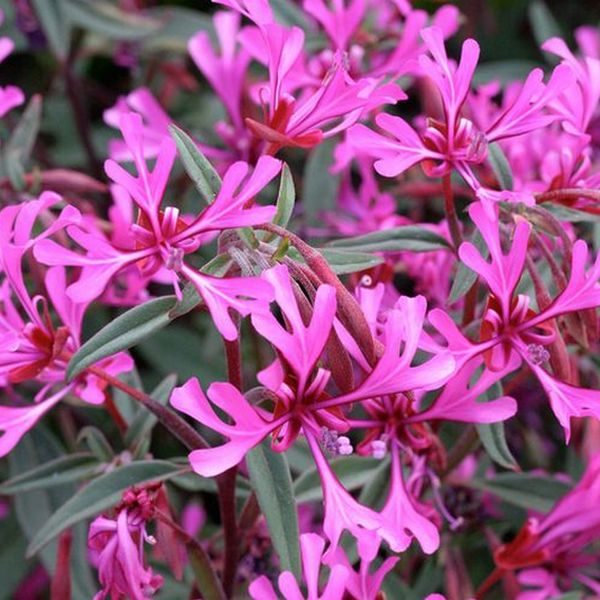

Clarkia "Breveri"
All of these varieties are mainly represented by pink and lilac flowers of various shades from muted to saturated. All other subtypes are just varieties of these varieties or just similar flowers.
Important! Clarkia can be grown not only for location in the garden. There are original undersized representatives that do well at home. The most spectacular of them are the "Radost" and "Khavskoe Solnyshko" varieties, which have salmon and raspberry hues.


Dwarf variety of clarkia
Plant species
As noted above, the plant is represented by several dozen species. However, only a few of these species are grown in flower culture, most often in the gardens of flower lovers the following species of this plant can be found:
- clarkia is graceful;
- clarkia is pleasant;
- Clarkia is the fairest, or pretty;
- Clarkia Brewery.
All of these plant species have beautiful, lively and bright flowers, so each of them is a real decoration of parks and gardens in the summer.
The nuances of growing clarke
A gardener who has an idea to plant this plant on his site needs to get acquainted with the recommendations for its cultivation. For example:
- the plant looks as impressive as possible if planted not in single nests, but in the form of a composition;
- clarkia can grow a mass of lateral branches, which must be taken into account during the distribution of plantings on the site;
- varieties with a long stem may need a safety net in the form of a peg, which is installed immediately during sowing, so that in the future a strong wind does not break the flower;
- between seedlings or seeds during planting, a distance of no more than 20 cm should remain, otherwise the plant will not be able to bloom profusely.
About 2 weeks before transplanting the plant into the ground or sowing seeds, the area where the flowers will be located must be dug up and old roots removed.
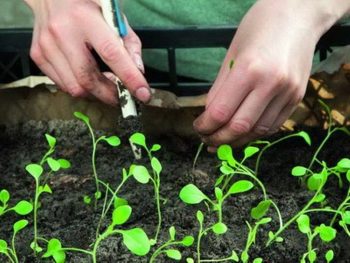

Young shoots have a delicate greenish color.
Clarkia seed prices
clarke seeds
Description ↑
Clarkia is one of the most beautiful garden annuals. There are many types of it, but flower growers use only K. marigold (Clarkia unguiculata, Clarkia elegans) and K. pretty (Clarkia pulchella) and their double hybrids for their flower beds. The first is quite high, sometimes not lower than 90 cm.The second is a blooming dwarf, only 30 cm.
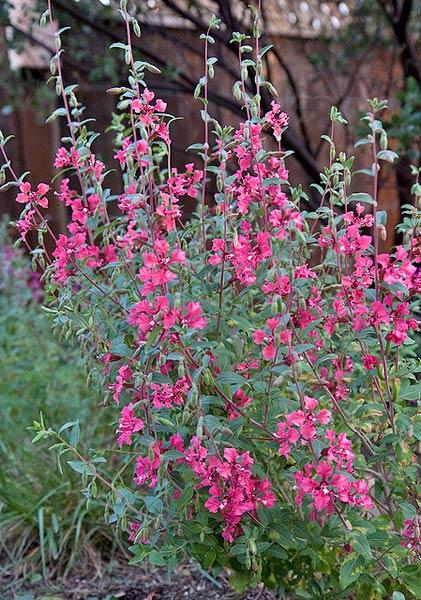

Its small flowers of the most delicate shades, like beads, are strung on thin stems. Blooms for 3 months - July, August, September.
From a distance, it seems that the plant has almost no leaves. Thin stems-twigs are abundantly covered with small, only 3-4 cm, flowers with roses. There are also simple inflorescences, but this does not make the plant less attractive.
From the lush flowering pom-poms-bushes, here and there reddish-green leaves peep out. Nature has greatly reduced their size so that they do not spoil the overall flowering picture.
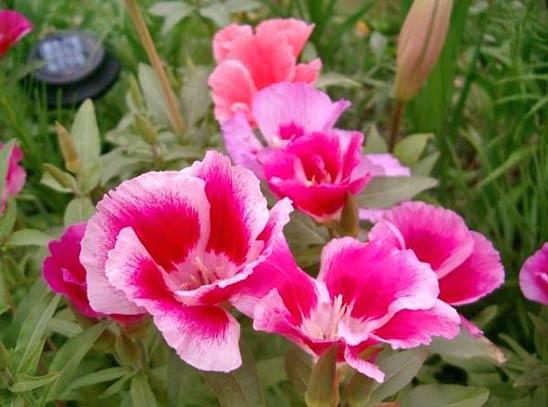

I’m sorry that I didn’t take a photo of my clarkie last summer. What a gorgeous bush it turned out! Aunt still asks what miracles I have bloomed so violently all summer and whether there will be more this year
Preparing for landing
Before placing a flower in an open garden area, complex preparation is required, which affects both the land where the plant will grow, and the seeds, and the place for planting. The principles of preparation will be the same regardless of the planting method, and they are all listed in the table.
Table 1. Preparation for planting clarke
| Stage | How is it going |
| Seat selection | The main requirement for a velvety flower is a sufficient amount of sunlight. The plant is located in places where shadow is least likely to fall. The rest of the flower is not particularly picky. |
| Preparing a container for seedlings | For sowing, shallow jars are optimal. They are scalded with boiling water or treated with alcohol. A long box is best suited, in which all clarke seedlings will germinate at once. You can also use individual jars, but it is not so convenient to work with them. |
| Soil preparation | The soil for clarkia should not be too acidic. A light soil is chosen that allows water and oxygen to pass through well. It is not recommended to take heavy clay soil as a basis, but if there are no other options, sand is added to the soil and dug up. The substrate in which the plant will live can be heated in the oven to kill all parasites and bacteria. |
| Fertilizing the hole | Regardless of the option that will be chosen for planting clarkia, it needs nutritious and moist soil. Therefore, it must be supplied in advance with a fertilizer consisting of potassium, phosphorus and a small amount of organic composition. Vitaminization occurs 15-20 days before the scheduled planting. If you plant flowers earlier, the concentrated composition of the plants will easily burn delicate seeds or young roots. As a top dressing, you can use mineral fertilizer: 1 tbsp. l. superphosphate + sulfate per 1 sq. m. soil. |
| Seed preparation | Before planting, it is necessary to soak the seeds in a solution of potassium permanganate for disinfection.They are wrapped in a paper napkin, which is wrapped in a bandage and placed in a weak solution for 3 hours. Then the seeds are taken out and laid out in a warm place on a paper napkin so that they dry out. |
Clarkia begins to bloom about 60 days after planting and ends with the first frost.
Important! On average, the growing season takes about 5 months, during which time the flower manages to grow full-fledged seeds. They are collected and used as planting material in the future. Varietal seeds removed from the site retain all their unique characteristics, which is very important for the summer resident.
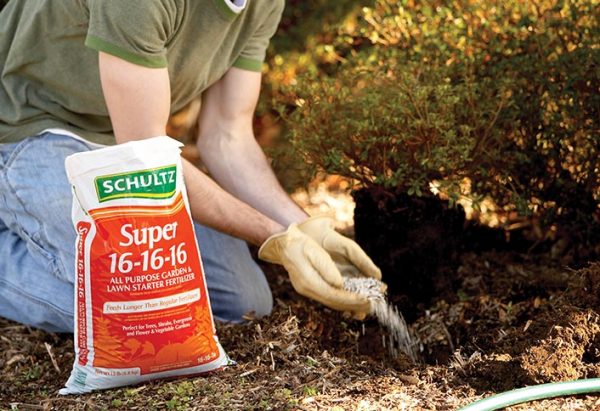

The soil necessarily requires preliminary fertilization.
Gardening tips
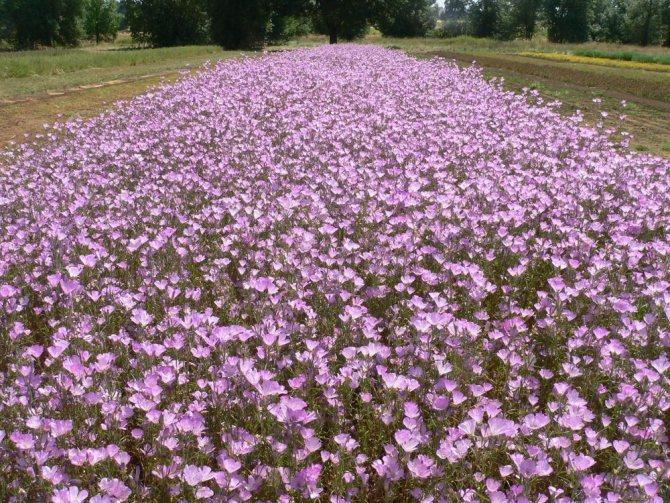

In order for clarkia to delight gardeners with its long flowering, it is necessary to follow the recommendations given in the article for planting and caring for it. Here are some tips from hobby gardeners for growing clarkia:
- It is better to plant clarkia in well-lit places, since it is a sun-loving plant. The soil for planting should be relatively poor, only in this case it is possible to achieve a lush flowering of the plant. If you plant clarke in fertile soil, this will lead to its significant growth and the development of green mass and a reduction in the number of buds.
- Gardeners recommend applying a small amount of fertilizer to support the growth of clarke, while it is preferable not to use organic fertilizers at all.
- In landscape design, according to gardeners, clarkia beds go well with roses.
- If there are tall plant species in the garden, then it is advisable to install appropriate supports and structures to support them.
- If the soil in which it is necessary to plant clarkia seeds has a strong acidity, then it must be reduced by adding slaked lime, and then, in the process of fertilizing the soil, add wood ash.
How to grow clarkia from seeds
There are two ways of planting a plant - in the form of seeds in the ground or in the form of seedlings. Most often, gardeners make a choice in favor of the first method, especially if they plan to create an abundant flower garden.
Option 1: planting directly into the ground
So, the place for the future flower garden has been determined, the seeds have been prepared, the soil has passed through feeding with mineral components. The time has come for direct sowing of flowers.
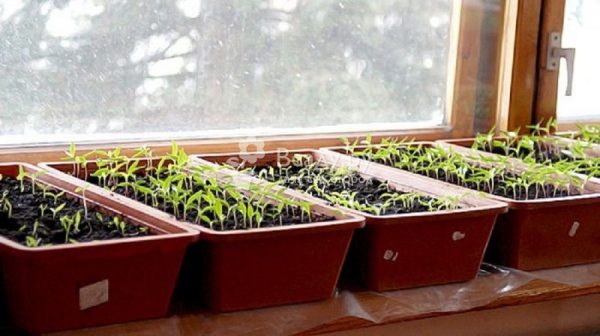

Clarkia seedlings
The plant in question, like most other annuals, mainly grows from seeds. The algorithm will be as follows:
- Several shallow grooves up to 2 cm deep are made in the ground at a distance of at least 20 cm from each other.
- Seeds are spread into the grooves with a toothpick or tweezers, after which they are lightly pressed to the surface. If the soil is heavy and clayey, the seeds are mixed with sand and poured into the grooves.
- The seeds are sprinkled with earth and sprayed with water from a spray bottle. Do not immediately water the garden bed from the watering can, as a dense stream of water can wash the seeds out of the soil.
- After 2 weeks, the seedlings should give a couple of real leaves. The sprouts are thinned out in such a way that between the plants in the same row there is a distance of at least 10 and no more than 20 cm. This optimal distance will allow the plant to be covered with flowers as densely as possible.
The moistened crops are covered with foil and regularly ventilated, but without creating drafts. Covering with a non-woven material will not only provide the flower with comfortable warmth, but also protect it from garden fleas and direct sunlight. The film is removed when the probability of night frost is reduced to a minimum.
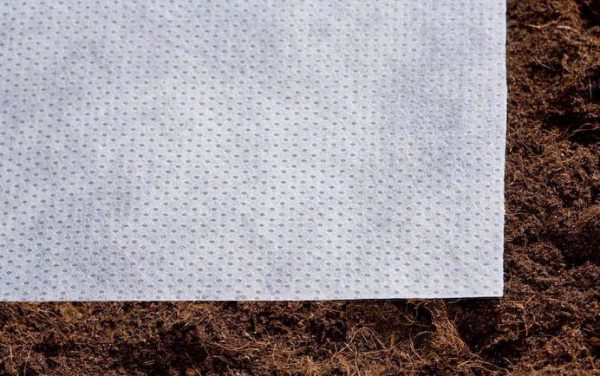

Non-woven covering material
If the choice is made in favor of winter sowing, the procedure begins with the arrival of the first cold weather. The seeds should not hatch, but even if this happened, they will calmly survive the winter.Plants obtained by this method are distinguished by increased resistance to adverse conditions, and flowering will begin in the 3rd decade of July.
Important! If planting occurs in early spring, watering can be skipped, since the soil is already sufficiently moistened by melted snow.
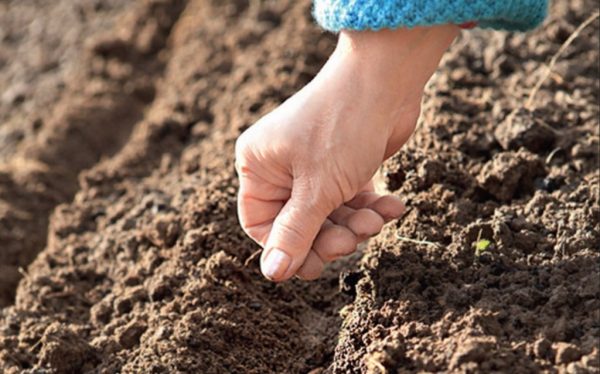

Many summer residents choose exactly the open planting of clarke in the soil.
Option 2: sowing seedlings
Some gardeners use the seedling method of growing clarkia so that it blooms as quickly as possible. Sowing of seeds takes place from mid-March to early April and differs in the following algorithm:
- The container with the prepared soil is covered with grooves by analogy with planting in open ground. The width between the rows is already less here - 4-5 cm.
- The seeds are mixed with sand and evenly poured into the grooves, after which they are slightly pressed and irrigated with moisture. Clarkia's seed is weightless and looks like dust, so it does not need to be deepened much.
- The container is turned into a kind of greenhouse: it is covered with a film and placed in a sunny place (on the windowsill). The land is regularly sprayed with water.
- Seedlings will appear approximately on the 10th - 12th day. When 2 full-fledged fresh leaves have appeared on the sprout, the seedlings begin to be planted in separate cups. Peat pots, which are later planted in open ground with a flower, are ideal.
- Seedlings that have grown at home are transplanted to a garden plot in the 3rd decade of May. As a rule, during this period, frosts are no longer terrible.
You can read more about sowing and growing flower seedlings in our article.
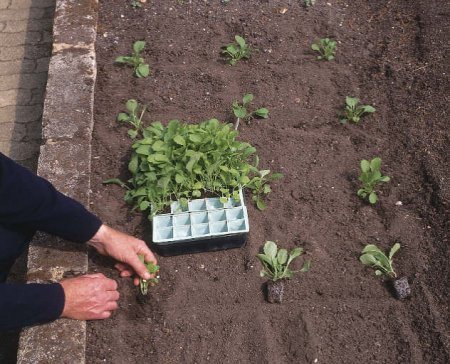

Transplanting clarkia seedlings
It is important for a gardener who grows clarkia not to forget that this plant is pollinated on its own. If representatives of different varieties coexist, the seeds will lose their characteristics and varietal uniqueness.
Important! Annual plants that are grown in vases or flower beds require increased moisture. To provide them with liquid, tablets with a hydrogel are placed on the bottom before planting. They will retain moisture and supply it to the plant as needed.
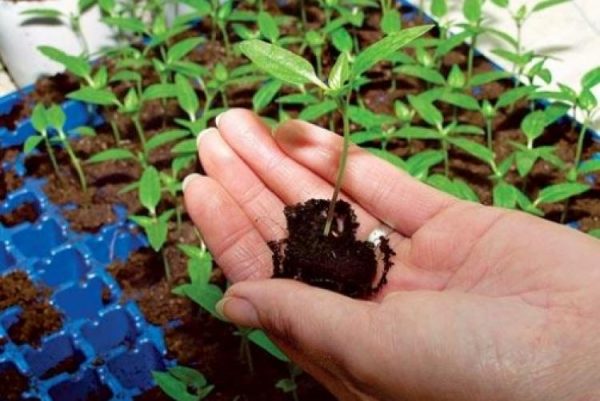

Transfer of young shoots to open soil
Seedling boxes prices
seedling boxes
"Diamond"
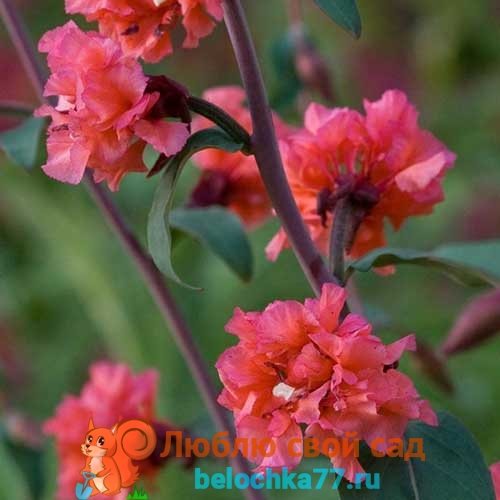

"Diamond"
"Brilliant" is a cold-resistant annual, up to 70 cm high. Clarks of this variety are covered with small, about 2 cm, flowers. The flower is good in groups and flower beds, looks beautiful in bouquets. Removing the lower leaves will prolong the freshness of the flowers in the water. The bright red color of the flower petals creates unique flower beds, which makes the suburban area fabulous and charming. Flowering begins in July and ends in September.
When to plant Clarkia?
The period when the plant is transferred to the beds depends on the method chosen for sowing:
- Planting directly into the soil. When sowing seeds directly into the ground, it is better to choose the autumn period: from the 2nd half of September. Sowing in mid-April is also allowed.
- Planting in the form of seedlings. Young shoots that have formed after sowing seedlings are transferred to uncovered ground in the 3rd decade of April or early May. A transplant is permissible during a period when the probability of a return of frost comes to naught.
When planting a plant in the form of seeds, the gardener has a greater choice of time for planting, since the seeds are not afraid of frost. Using this method, you can plant flowers before winter, without fear that they will freeze and not sprout.
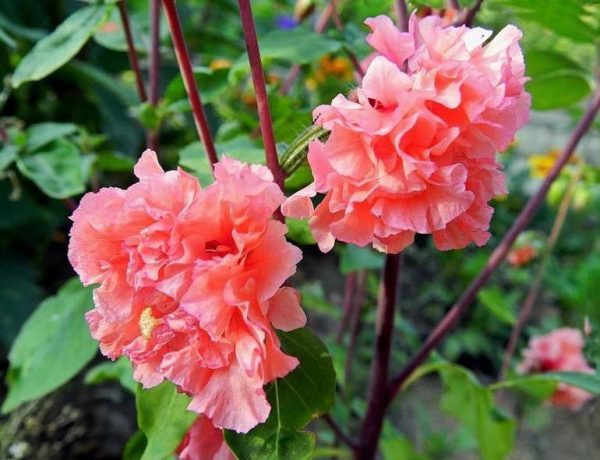

Blooming pink clarkia
"Mirinda"
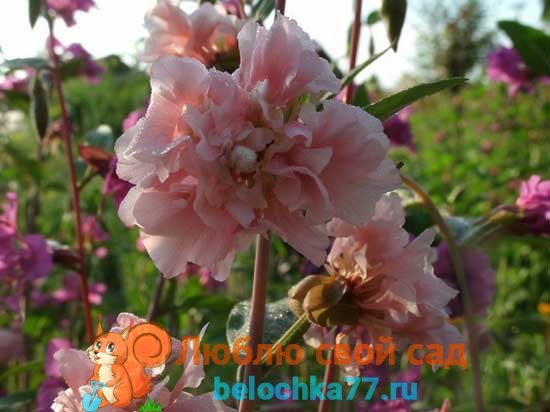

"Mirinda"
"Mirinda" is a brightly blooming annual plant up to 60 cm high. Almost sessile flowers are very similar to miniature roses. The color of the terry inflorescences is salmon-orange. Blooms from July to September. Looks great in group plantings flower beds. It is used as a cutting plant for interior decoration.
How to care for seedlings?
Clarkia seeds hatch and emerge from the ground for about 8-12 days.They need to be provided with care, which consists of the following procedures:
- Thinning young growth. It is necessary to leave strong plants, removing all weak shoots.
- Topping. To provide the plant with good bushiness, at the shoot with a height of at least 10 cm, you need to pinch off the upper part. This will stimulate the development of buds and speed up the onset of flowering, as well as shape the design of the bush to your liking.
- Watering. Young seedlings should be watered regularly, focusing on the drying of the topsoil.
- Fertilizer. The first mineralization is carried out 15-16 days after the sprouts emerge. Fertilizer with a high concentration of nitrogen is used for feeding.
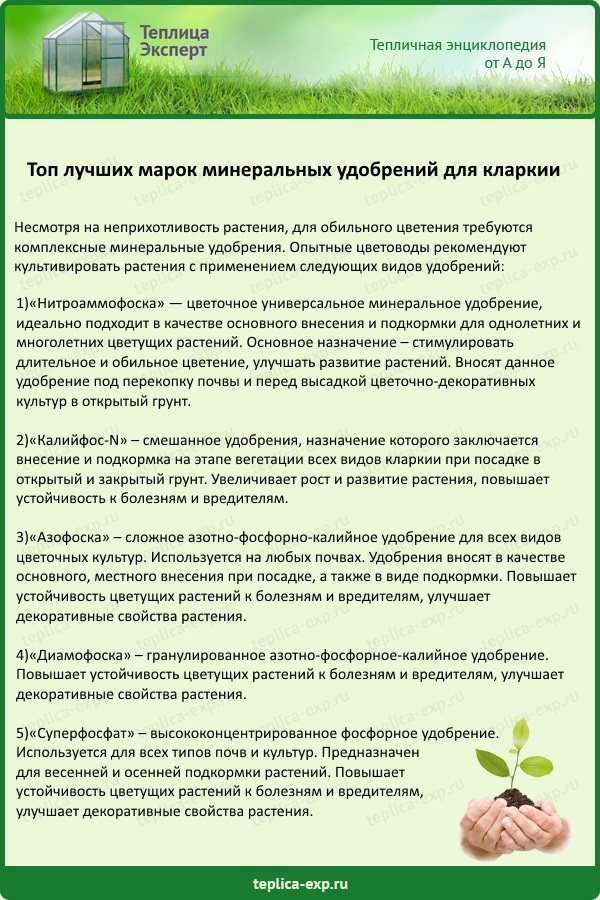

The best brands of mineral fertilizers for clarkia
Shoots that have reached the age of three weeks begin to be looked after as if they were mature plants.
Important! Young shoots of clarkia are not recommended to dive. She does not tolerate transplanting very well, especially if a hybrid variety is chosen for planting.
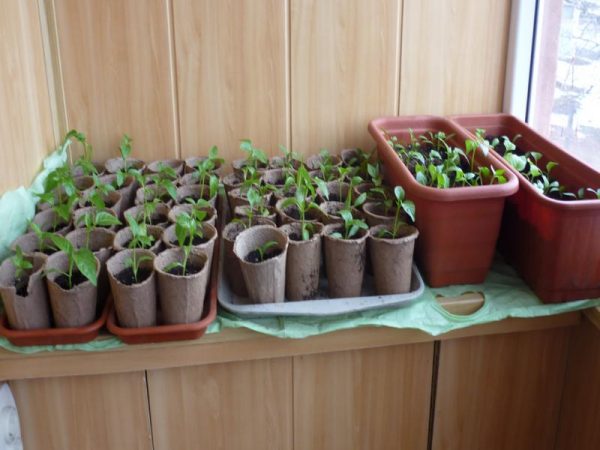

The best solution for seedlings is planting in peat pots
Prices for Azofoska
Azofoska
Algorithm for transplanting clarke into open ground
When it gets warm outside, the seedlings are moved to the beds. If the plants are in plastic pots, they are moved in a transhipment way, that is, with a large clod of earth.
A peg is installed next to each flower, which will serve as a support. Young shoots that are intertwined with each other do not need to be separated, otherwise they will not survive. The gap between the groups of plants remains the same as with open planting of seeds in the ground - from 20 to 30 cm.
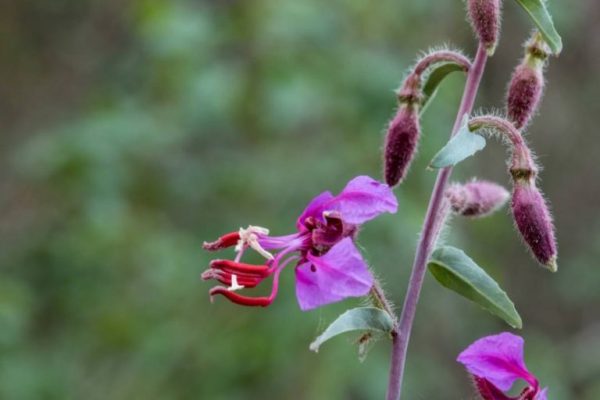

Dissolved clarkia
Clarkia in landscape design
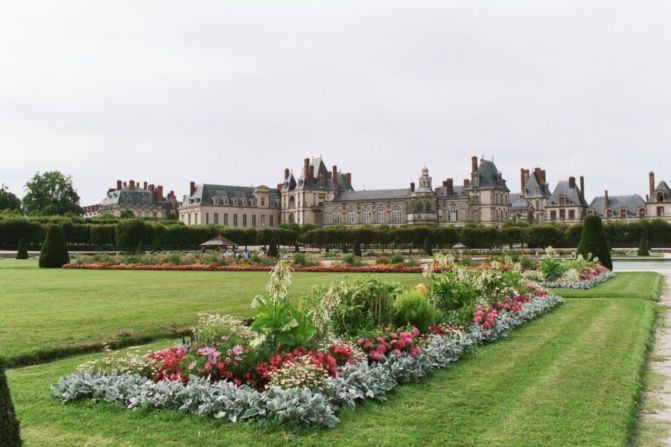

It is really difficult to find a more suitable flower for decorating gardens, parks, walls of various structures than clarkia. The reasons why this flower has gained a strong position in landscape design is that it is unpretentious, has gorgeous colorful flowers that appear in abundance and bloom for a long time. In addition, the flowers give off a pleasant scent.
Clarkia can be planted alongside other flowers such as roses or irises. Also, beautiful combinations are obtained if you alternate flower beds with clarke with beds of asters or zinnias.
Since the sizes of different types of plants are different, this can be used to create multi-level landscaping. For example, clarkia breveri is a great flower to plant in a pot, which can be placed in a variety of places in the garden, and can also be used to decorate terraces and balconies.
How to care for clarkia in the garden
This flowering plant does not require much care. Clarkia care includes several points, which are presented in the table.
Table 2. Principles of caring for Clarke graceful
| Procedures | Features of the |
| Watering | This plant does not need high humidity. It should be watered only if it is extremely hot outside and there is no rain. Humidification should be moderate - water should quickly enter the ground, and not stagnate on the surface. In normal weather, clarke has enough moisture, which falls along with precipitation. |
| Fertilizer | Plants are fertilized twice / thrice a season. The first feeding occurs at the beginning of bud growth, the last one during flowering. Clarkia is not suitable for organic fertilizers with nitrogen content, since it does not tolerate too fertilized soil. Mineral formulations are used as top dressing. |
| Weeding and loosening | Weeds around the clarke are removed as they emerge. Weeding must be combined with loosening the soil to provide the root system with oxygen access. |
| Pruning | To create a beautiful flowering bush, it is necessary to remove wilted inflorescences. Most of them are cut off.This will not only preserve the external aesthetics, but also save the plant from unnecessary waste of energy: instead of providing the withered inflorescences with juices, it will start developing new ones. A few dried flowers can be left if the grower plans to remove seeds for planting in the coming season. |
The soil around the clarke can be mulched: cover with a protective layer of leaves or cut grass. Such a procedure can solve many problems, protecting the plant from the appearance of weeds and keeping the soil moist for a long time after watering.
After the end of flowering, the upper part of the clarke is completely cut off, like any other annual plant. Dig up the ground under the flower, and remove the roots. Gardeners recommend burning the root system removed from the ground.
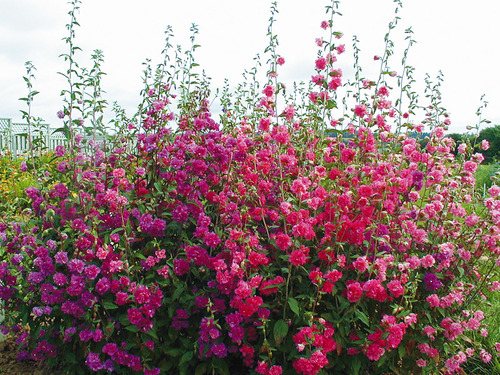

A small overgrown garden of multicolored clarke
"Sakura"
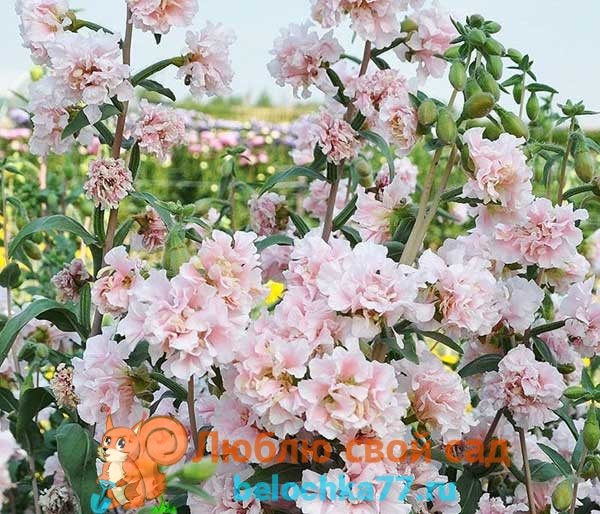

"Sakura"
Sakura is a clarke variety with delicate flowers that bloom in July. Terry inflorescences of exquisite peach color, densely located on a high branched stem. Used for group compositions and to create tall, luxurious bouquets.
Dichondra "emerald waterfall" - growing from seeds
Clarkia pests and diseases
The plant is not prone to frequent diseases, but sometimes dirty specks with dark borders appear on foliage or flowers. Such spots signal the appearance of a fungal disease. Typically, fungus spreads if the soil is too damp. To cure the plant, it is treated with fungicides twice a week.
The most dangerous pest for clarkia is the flea. Insects are able to completely exterminate the plant already at the stage of the first sprout emergence. If a flea was seen on a young shoot, chemical treatment will only help the insect to completely destroy the crops.
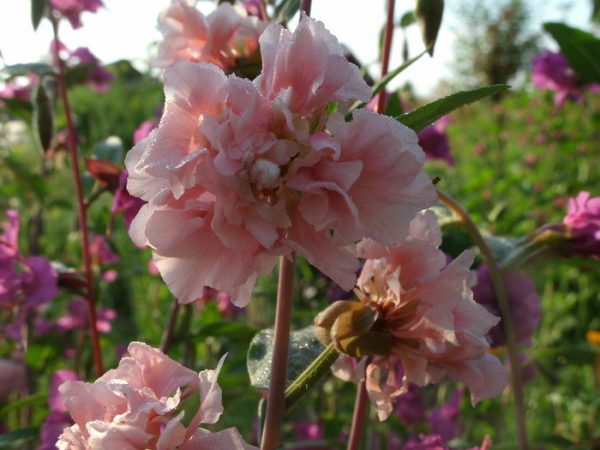

Fungus-affected flowers become stained and dull
Clarke combinations with other plants
Clarkies can help you create a truly charming flower garden, especially when combined with other plants. Lilies, phloxes, asters, white daisies are great for them. In addition, they look spectacular and bright against the background of other low shrubs, for example, red roses.
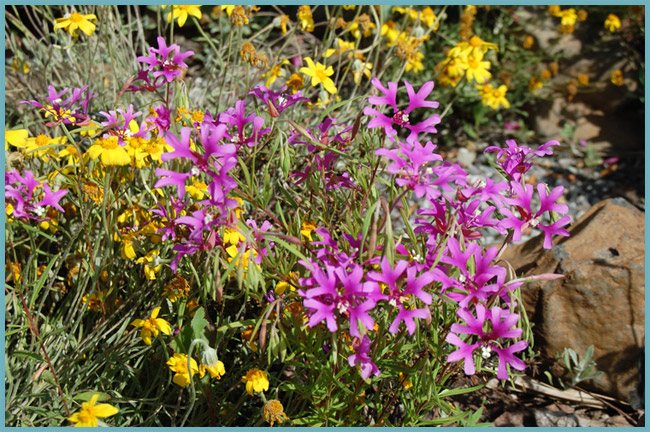

Clarkia in the flower garden
How to Collect Clarkia Seeds
Clarkia, thanks to developed self-seeding, is able to independently create a lush garden. In a dried flower, if it was not removed in time, a box with many small seeds begins to ripen. A month is enough for full maturation, during which time the seed sac should turn from green to dark brown.
When the capsule is ripe, it opens and scatters the seeds. For the next season, the sowing site will be covered with dense grass from young clarkia shoots. They can be thinned out or transplanted to continue growing the flower.
Some gardeners prefer to control the spread of the flower and remove the seeds themselves. It goes like this:
- a wilted flower with an unripe box is wrapped in a cloth so that the seeds do not wake up;
- after 30 days, the flower is carefully cut and, if necessary, sent to dry;
- the fabric is untied, and the seeds are poured onto a paper napkin and wrapped.
You can use the resulting planting material for sowing before winter or save until the end of April. The seeds retain their ability to hatch for 4 years.
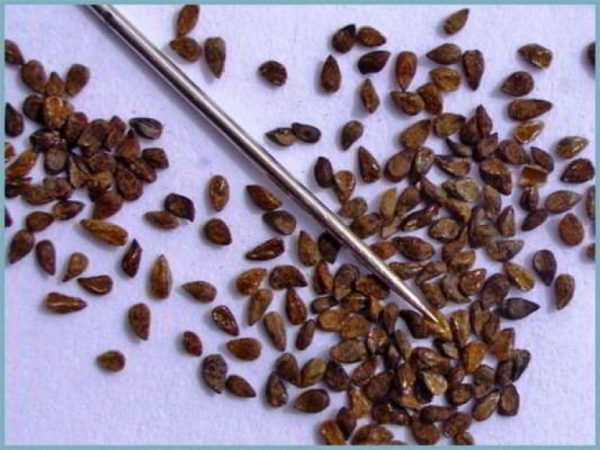

Clarkia seeds are graceful compared to the tip of a needle
After flowering
Seed collection
This plant is capable of multiplying without your participation by self-sowing. In spring, you only need to carefully thin out the seedlings. If you need seeds, they can be collected very easily. When the plants are in bloom, you will need to mark the most spectacular flowers. When they begin to fade, then you will need to put on gauze bags on them. The seeds will mature 4 weeks after the flower withers, and the color of the capsule should turn brown. Cut the pods and sprinkle the seeds onto a newspaper.These seeds can be sown before winter or poured into a paper bag, where they will be stored until the next spring.
Wintering
When the flowering of the clarke ends, the bushes, if desired, can be cut to the surface of the soil. And during the autumn digging of the site, it will be necessary to remove the remains of plants and burn them. It is not recommended to throw them away, as pathogenic microorganisms or fungi may appear in such plant residues.
How and when to plant
Clarkia graceful is able to give abundant bright flowering, if you follow simple rules when planting it. First of all, it is necessary to decide in what way the plant will be grown - by seed or seedling. The first option can be used by those gardeners who live in warm climates.
How to plant ornamental cabbage for seedlings, and how to do it correctly, this information will help you understand.
But how the cultivation of climbing Azarina takes place, this video will help to understand.
It will also be interesting to know how the cultivation and care of Aubrieta takes place.
maybe
Care requirements
Like any, even the most unpretentious culture, clarkia requires attention. Maintenance consists of the usual procedures for watering, weeding, loosening and feeding.
The state of the soil serves as a guide for watering - you need to water when the earth dries up. The flower is equally bad for excess moisture and excessive drying out of the soil. The amount of watering should be moderate so that the water does not stand under the bushes, but is evenly absorbed. Several times a season, to remove the crust, the soil is loosened after watering.
Organic fertilizers for clarkia are not desirable. Mineral complexes are more preferable - they provide the bush with the necessary nutrition and promote long flowering. They must be brought in according to the instructions 3-4 times over the summer.
A flower bed looks sloppy if you do not remove dried leaves and buds, so the decorative effect of the bushes will ensure the regular cutting off of drying foliage and wilted buds. In addition, this procedure will serve to prevent the spread of infections and pests. If you want to independently prepare the seeds, you can leave a few buds by pinching the top of the stem for quick ripening. If you leave all the buds, then during self-seeding, the plantings thicken, which ultimately affects the decorative effect.
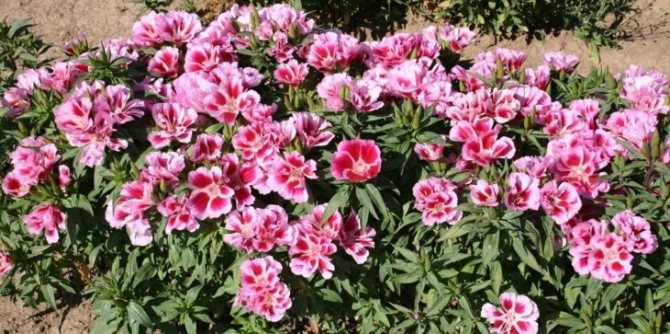

What is the time frame for landing
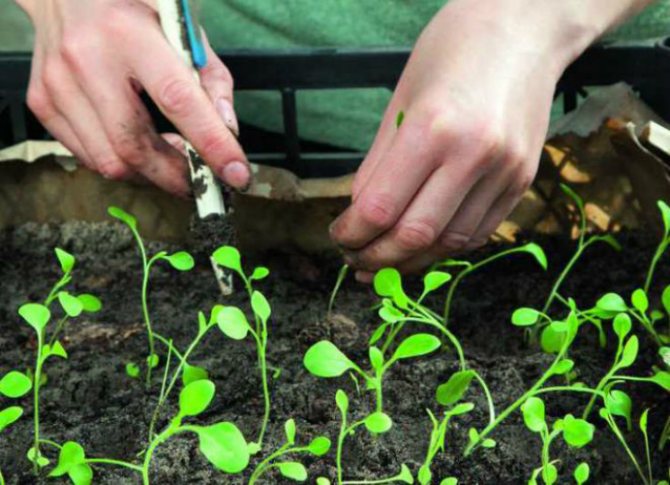

The phases of the moon have an effect on the rate of growth and development of plants. You can not plant and sow them on the days of the new moon or full moon.
It is important to take into account the fact that during the growing phase of the moon, the tops of the plants develop intensively, therefore this time is favorable for sowing seeds. When the moon wanes, favorable conditions are created for the development of the root system and the removal of dried-up parts of the flower (pruning).
In 2019, the following dates will be favorable for sowing clarkia seeds:
- March - 10, 12, 15;
- April - 7, 11, 18;
- May - 9, 10, 15, 17;
- June - 5, 6, 12, 13, 16;
- July - 8, 9, 11, 14, 16.
For landing, transplanting and picking, favorable conditions will be on the following days:
- March - 10, 12, 16;
- April - 7, 11, 18;
- May - 8, 15, 18;
- June - 6, 11, 14, 15;
- July - 8, 10, 11, 14, 15, 16;
- August - 5, 7, 10, 11, 12;
- September - 1, 4, 6.9.
Preparing the soil for cultivation
We start growing clarke from seeds with soil preparation. She prefers loose and well-moistened soils. However, they do not need to be rich in nutrients. Clarkia, unlike most other flowering plants, does not tolerate "fat" and heavy soil, such as black soil. That is why, to grow this flower, almost any type of soil should be mixed with sand. Otherwise, cases of lodging of stems are very often noted. Slightly acidic soils are considered the most suitable for growing this plant. They must be loose and permeable.For growing seedlings, we use a mixture of sand (2 parts) and peat (one part).
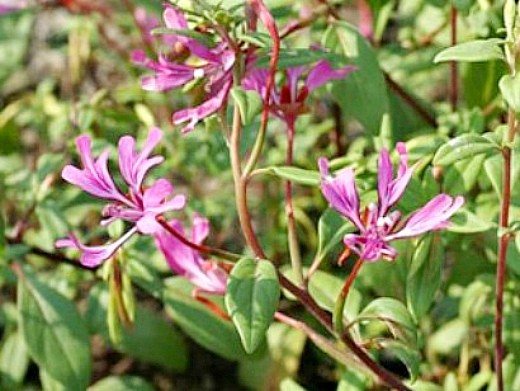

Species and botanical characteristics
The Clarkia clan belongs to the Cyprian family, it is the closest relative of godetia, having a common homeland and origin with her. The genus is named after the American explorer and traveler who introduced the plant to culture.
Clarkia flowers, common in our gardens, are a herbaceous plant, at the end of the growing season, partially lignified, erect stem from 30 cm to 1 meter high. Due to its good branching, it forms a lush bush. The leaves are bluish-green, the flowers are of medium size (ø3.5–4 cm), collected at the top in a raceme or a sparse ear. The predominant color range is pink-lilac, but there are varieties with a white, purple color.
A sunny plot in the garden is the only mandatory requirement in the agrotechnology of the summer garden. For the rest, he is rather unassuming - he loves not too fertilized, with a slightly acidic reaction, the soil is to manage with rain moisture, and is resistant to spring frosts.
It is interesting! Godetia seeds are often found under the name clarkia. Distinctive features of godetia are a creeping stem, satin flowers similar to an azalea, racemose inflorescences.
Site selection
In its natural environment, the culture feels comfortable both in sunny areas and in partial shade of neighboring plants. It should be noted that clarkia also grows and develops in the shade, but foliage grows to the detriment of flowering - not so many flowers are formed and the size of the buds is smaller.
The soil in the flowerbed should be loose and light in order to maximize the supply of nutrients to the roots. In heavy soil, moisture retains longer, which contributes to the development of fungal infections and affects the condition of the root system. You can lighten the soil by adding sand or peat. With a high location of groundwater, it is recommended to make the flower bed higher and be sure to fill in drainage.
The flower grows best on slightly acidic, not very fatty soils. In areas with an excess of nutrients, the roots develop poorly and the plant dies. You can create a suitable level of acidity with the help of sulfur, adding 60 g to each square of the area during the preparation of the flower beds.
On a note! The soil will be acidified by adding 1.5 kg of peat per 1 m², watering with a solution of citric (oxalic) acid at the rate of 1.5 tbsp. l. on a bucket of water. The addition of lime powder will reduce the acidity index.
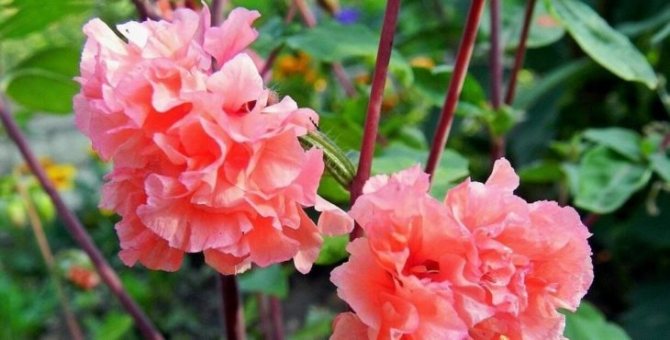

Shrub varieties
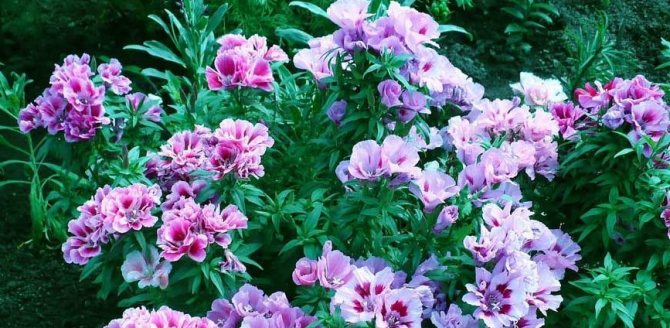

Gardeners most often plant three types of flowers in their gardens: Clarkia Graceful, Pretty, and Breveri. On their basis, many different unique varieties have been bred.
The main types of shrubs:
- graceful clarkia has a thin, branched, strong stem, grows up to 90 centimeters. The leaves are densely green with red veins and jagged edges. Blooms in simple or double flowers in June and pleases with its flowering until the end of September;
- Clarkia pretty grows up to only 30 centimeters. Blooms in various double or non-double flowers. Blooms in mid-May and blooms before frost;
- terry clarkia has amazingly beautiful flowers. Plant height 25 - 65 centimeters. The diameter of the double flowers is 6 centimeters. They are strung on stems and resemble a spike-shaped plant in their appearance;
- the Albatross variety has double white flowers, a branched bush, its height can reach 75 centimeters;
- the variety Purpurkenig has terry carmine flowers, 4 centimeters in diameter, the height of the shrub reaches one meter;
- The Salmon Perfection variety has double, pink-salmon flowers with a diameter of 3.5 centimeters. Loose shrub, no more than 90 centimeters high.
- the Brilliant variety is also appreciated by gardeners. The tall bush has large bright pink double inflorescences;
- the Clarkia Sakura variety has terry inflorescences of a white-pink hue.Its height is 120 centimeters, its appearance resembles a Japanese cherry;
- the bushes of the Sheftane variety have a lilac-lilac color, height 50 centimeters.
Seed collection and wintering
You need to determine in advance which peduncles to leave for seed ripening. You do not need to delete them. The grains appear after pollination of the ovary. They ripen in small oblong boxes. 1 g can contain up to 3,000 seeds. They ripen in about a month after the end of flowering. When the seed pods turn brown, the seeds can be harvested. It is recommended in advance to put a tissue bag on the seed box, so that self-seeding into the ground does not occur.
The seeds are additionally dried for several days, then stored in paper bags in a dry, cool room. After 3-4 years, the seed loses its quality, germination decreases. Therefore, it is better to use fresh seeds for sowing.
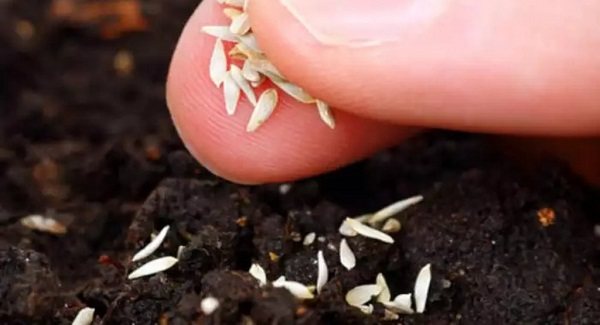

Outdoor care
The graceful clarkia is not picky, which distinguishes it from most annuals. Caring for her is simple and not difficult. But if you want to admire especially lush and abundant flowering, it is important to take care of clarkia with all responsibility.
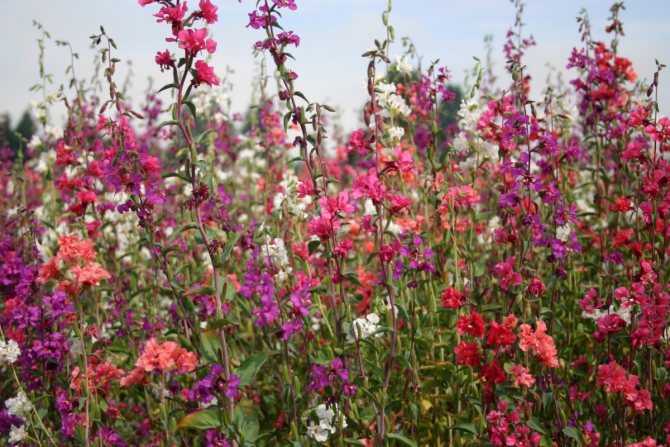

Photo:
Clarke soil
Clarkia grows well and develops on light, slightly acidic soils with a loose structure. If the soil is oxidized, you can sprinkle it with dolomite flour or lime crumb. To eliminate excess alkali, the earth can be watered with a citric acid solution. Clarkia loves rich, fertilized soils, so a superphosphate solution must be added a couple of weeks before planting. The addition of peat will also be useful.
It is worth remembering that the soil needs timely loosening and removal of weeds. At first, after planting, you need to be very careful at the same time, otherwise there is a risk of damaging the weak root system.
Watering Clarkia
Clarkia likes moderate watering, so they moisten the soil as needed. In hot summer weather, it will have to be carried out much more often than on cloudy days. It is important to prevent drying out or, conversely, waterlogging of the soil. Watering is carried out in the evening or in the morning.
Fertilizer for Clarkia
The annual is fed twice a month. For this purpose, complex and mineral fertilizers are used for flowering plants. You can also use a solution of chicken manure at a ratio of 1:15. This will provoke a set of green mass and stimulate the growth of the bush. In addition, such dressings do not harm beneficial insects and do not interfere with pollination. Sometimes wood ash is poured into the soil as an additional fertilizer.
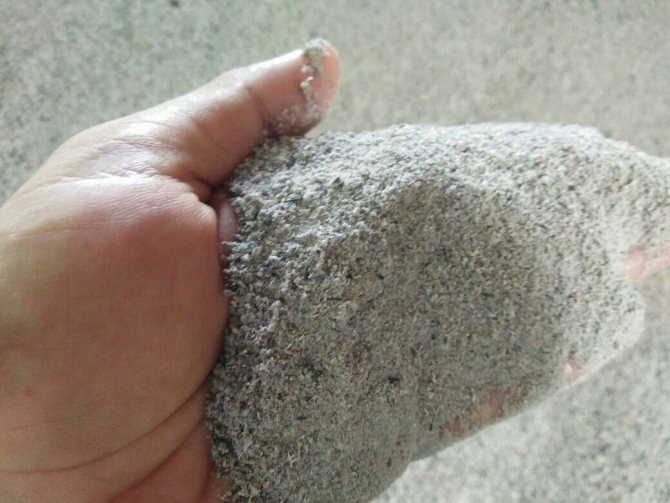

Photo:
Clarkia pruning
When the shoots reach 12 cm in height, they are pinched for more intensive tillering. So that the plant does not lose its decorative effect and does not multiply by self-sowing, fading inflorescences are cut off as needed.

